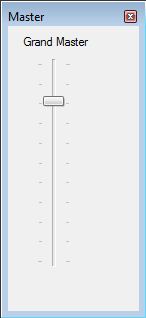Difference between revisions of "Lesson 21 Tut3"
Jump to navigation
Jump to search
| Line 12: | Line 12: | ||
Here you'll receive a summary of the possible executions of the show with DMXControl 3. | Here you'll receive a summary of the possible executions of the show with DMXControl 3. | ||
| − | + | ==Lecture 21: Summary Execution of show== | |
| − | ==Lecture | ||
| − | |||
| − | |||
The two most important means of DMXControl 3 for controlling a show are | The two most important means of DMXControl 3 for controlling a show are | ||
* Executors [[Lesson 15 Tut3]] and | * Executors [[Lesson 15 Tut3]] and | ||
* SoftDesks [[Lesson 16 Tut3]] | * SoftDesks [[Lesson 16 Tut3]] | ||
<br> | <br> | ||
| − | + | Furthermore, one can directly use the cuelist and external clients (eg OSC clients). With the soft-desk concept you can practically rebuild any manual lighting console. Particularly ingenious is that multiple people can control a show in parallel, e.g.: | |
| − | |||
| − | Furthermore, one can directly use the cuelist and external clients (eg OSC clients). With the soft-desk concept you can practically rebuild any manual lighting console. | ||
| − | Particularly ingenious is that multiple people can control a show in parallel, e.g.: | ||
* One person controls the front light. | * One person controls the front light. | ||
* A second person is responsible for stage lighting. | * A second person is responsible for stage lighting. | ||
* A third person controls certain pieces of music (via timecode triggered cuelists). | * A third person controls certain pieces of music (via timecode triggered cuelists). | ||
| − | |||
There is yet another control agent in the execution: | There is yet another control agent in the execution: | ||
| − | + | <br> | |
In comparison to DMXControl 2, we have only 1 Grandmaster, but it does its job: All dimmer channels are impacted. | In comparison to DMXControl 2, we have only 1 Grandmaster, but it does its job: All dimmer channels are impacted. | ||
| − | |||
| − | |||
{{Picture_with_subtitle |DMXC3L17 GrandMaster.JPG|1|Grandmaster|center}} | {{Picture_with_subtitle |DMXC3L17 GrandMaster.JPG|1|Grandmaster|center}} | ||
| − | |||
You get the Grandmaster via '''Controls -> Master''' | You get the Grandmaster via '''Controls -> Master''' | ||
| − | |||
==Exercise== | ==Exercise== | ||
| − | + | 1) Set the Grandmaster to 50% and 100%. | |
| − | + | 2) Use two clients simultaneously in a network. | |
| − | |||
| − | |||
| − | |||
| − | |||
| − | |||
| − | |||
| − | |||
| − | |||
| − | |||
{{NavigationTop-Tut3 | {{NavigationTop-Tut3 | ||
| LinkBackwards = Lesson_20_Tut3 | | LinkBackwards = Lesson_20_Tut3 | ||
| Line 61: | Line 41: | ||
| TextForwards = Lesson 22 | | TextForwards = Lesson 22 | ||
}} | }} | ||
| − | [[ | + | [[de:Lektion_2_Tut3]] |
| + | [[Category: Tutorials DMXControl 3]] | ||
Revision as of 17:31, 14 May 2013
| [[File:{{{Logo}}}|48px|link=]] | {{{Pagetitle}}} |
Overview
Here you'll receive a summary of the possible executions of the show with DMXControl 3.
Lecture 21: Summary Execution of show
The two most important means of DMXControl 3 for controlling a show are
- Executors Lesson 15 Tut3 and
- SoftDesks Lesson 16 Tut3
Furthermore, one can directly use the cuelist and external clients (eg OSC clients). With the soft-desk concept you can practically rebuild any manual lighting console. Particularly ingenious is that multiple people can control a show in parallel, e.g.:
- One person controls the front light.
- A second person is responsible for stage lighting.
- A third person controls certain pieces of music (via timecode triggered cuelists).
There is yet another control agent in the execution:
In comparison to DMXControl 2, we have only 1 Grandmaster, but it does its job: All dimmer channels are impacted.

|
| Picture 1: Grandmaster |
You get the Grandmaster via Controls -> Master
Exercise
1) Set the Grandmaster to 50% and 100%. 2) Use two clients simultaneously in a network.
| |||||||||||||